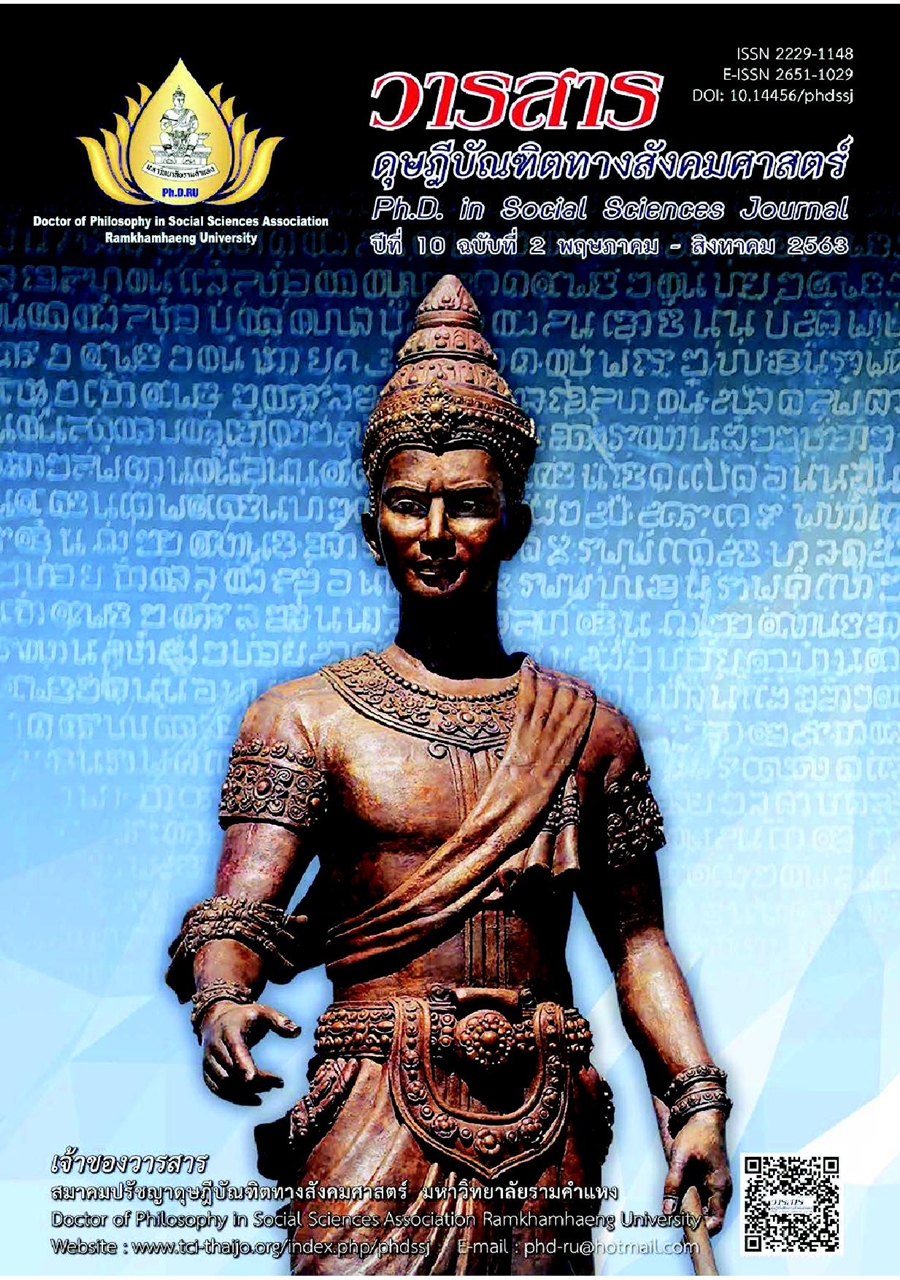Causal Structure of Performance of Rajamangala University of Technology Suvarnabhumi
Main Article Content
Abstract
This research aimed (1) to study social responsibility, orientation on Information Technology, management, and performance of Rajamangala University of Technology Suvarnabhumi and (2) to analyze the causal model of structure influencing the performance of Rajamangala University of Technology Suvarnabhumi. The sample size are academic and support personnel at Rajamangala University of Technology Suvarnabhumi 370 people using multi-stage sampling. The research instrument was questionnaire. Statistics used in data analysis were Descriptive Statistics and Structural Equation Model Analysis (SEM).
Research results were as follows: (1) Social responsibility, Orientation on Information Technology, Management and Performance of Rajamangala University of Technology Suvarnabhumi were at a high level and (2) The Causal of Performance of Rajamangala University of Technology Suvarnabhumi was consistent with empirical data. The model’s harmony indexes were as follows: χ2/df = 1.696 CFI = 0.993 GFI = 0.971 AGFI = 0.942 and RMSEA = 0.043 The results of this study will be guideline for the administrators in developing a more effective university management approach.
Article Details
Academic articles, research articles, and book reviews in the Ph.D. in Social Sciences Journal are author’s opinions, and not the publisher’s, and is not the responsibility of the Ph.D. in Social Sciences Journal Philosophy Association, Ramkhamhaeng University. (In the case that research is done on human, the researcher has to be trained in Ethics for Doing Research on Human Training and has to produce the evidence of the training).
References
Abbas, N. N., Fiaz, M., Batool, R., & Fareed, Z. (2008). Student affairs management: Challenges for contemporary academia. Northwestern Polytechnical University.
Abrego-Almazán, D., Sánchez-Tovar, Y., & Medina-Quintero, J. M. (2017). Influence of information systems on organizational results. Contaduría Y Administración, 62(2), 321-338.
Carroll, A. B. (1979). A three-dimensional conceptual model of corporate social performance. Academy of Management Review, 4(4), 497-505.
Carroll, A. B. (1991). The pyramid of corporate social responsibility: Toward the moral management of organizational stakeholders. Business Horizons, 34(4), 39-48.
Chalermwongsavaj, W. (2012). The relationship of factors affecting social responsibility of Private Higher Education Institutions. Executive Journal, 20(1), 116-122. [In Thai]
Cragg, P., Mills, A., & Suraweera, T. (2010). Understanding IT management in SMEs. The Electronic Journal Information Systems Evaluation, 13(1), 27-34.
Fayol, H. (1949). General and industrial management. Pitman.
Ismail, M. (2009). Corporate social responsibility and its role in community development. An International Perspective, 2(9), 199-209.
Jaichalad, N. (2014). Teaching document of activities management. Pibulsongkram Rajabhat University, Faculty of Education. [In Thai]
Junnoi, P. (2017). Special education: Article 4.0. Retrieved from https://www.kroobannok.com/81497 [In Thai]
Kanthong, S., Tuntirojanawong, S., & Vijitwanna, S. (2016). Development of administration model for Higher Education Institutions founded on the amalgamation of princess of Naradhiwas University. Princess of Naradhiwas University Journal, 8(1), 126-139. [In Thai]
Kotler, P., & Lee, N. (2005). Corporate social responsibility: Doing the most good for your company and your cause. John Wiley & Sons.
Rajamangala University of Technology Suvarnabhumi. (2017). Statistical data. Retrieved from http://www.hrd.rumtsb.ac.th [In Thai]


